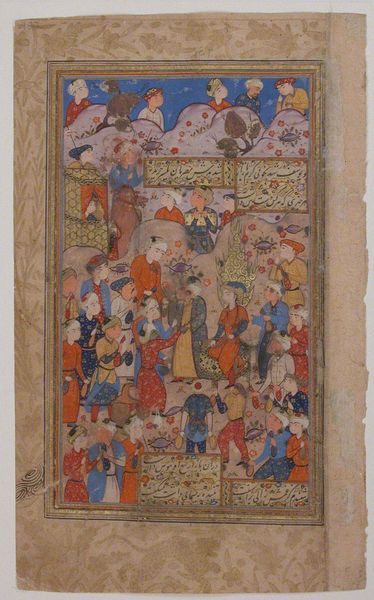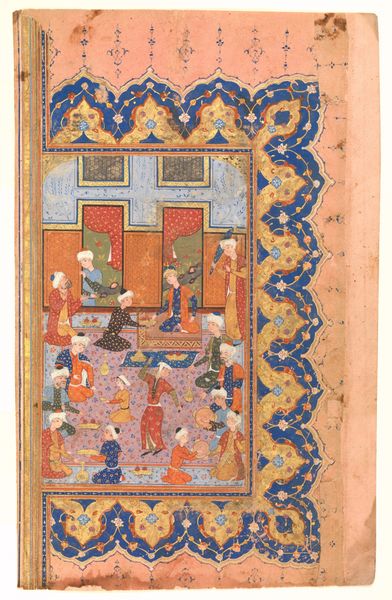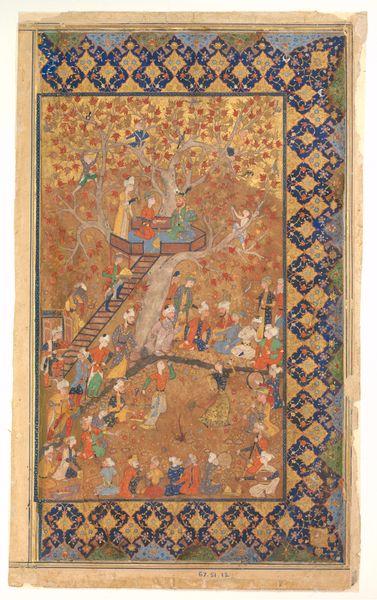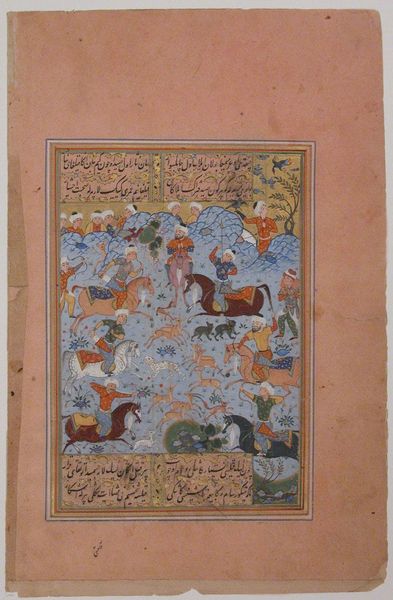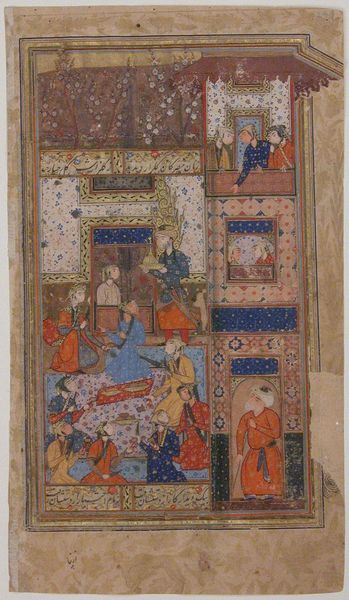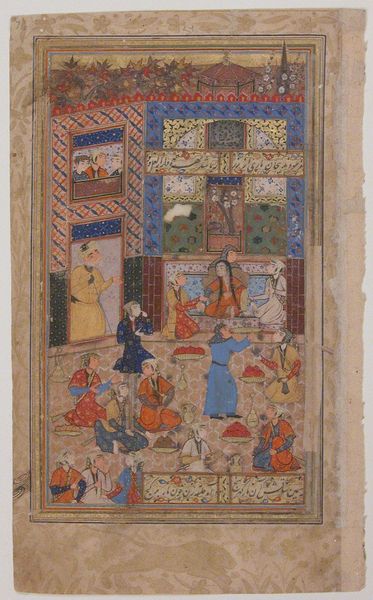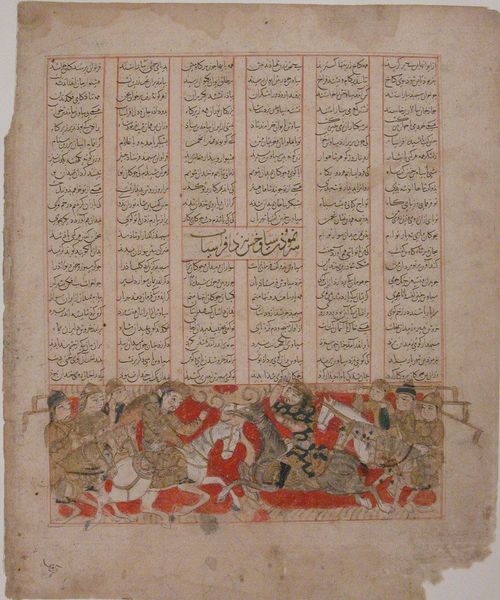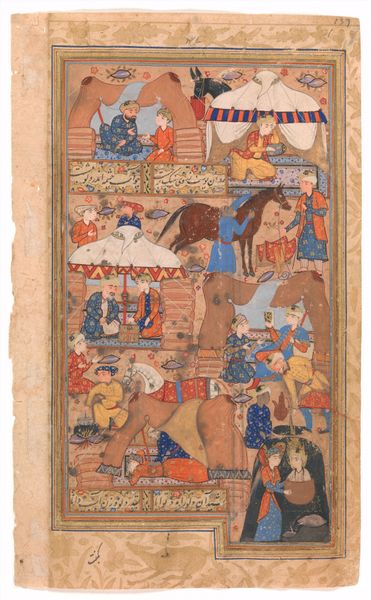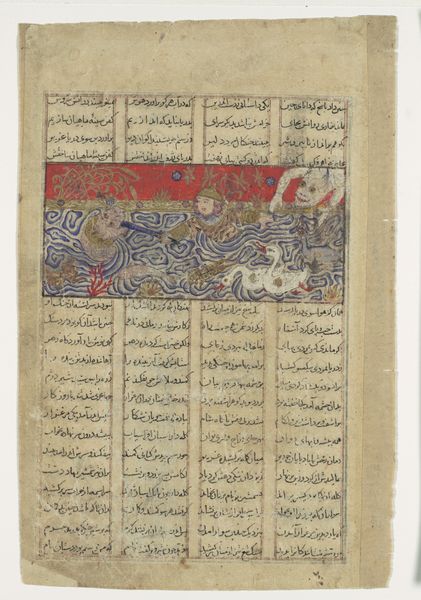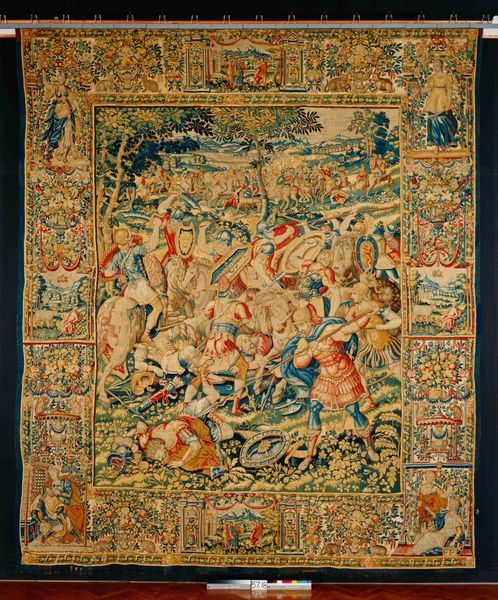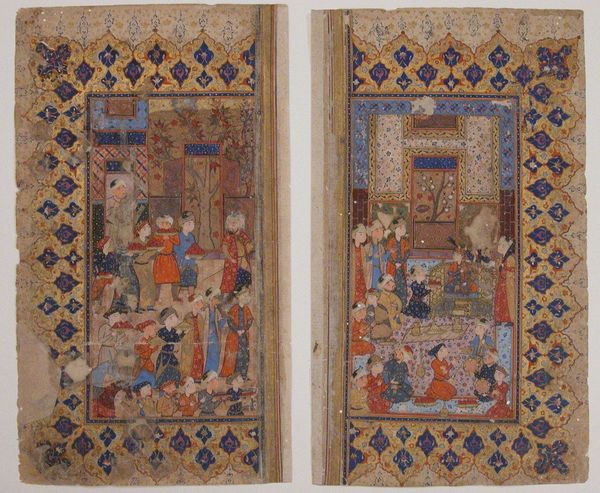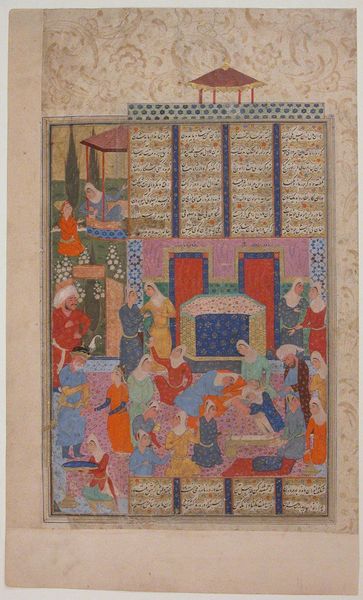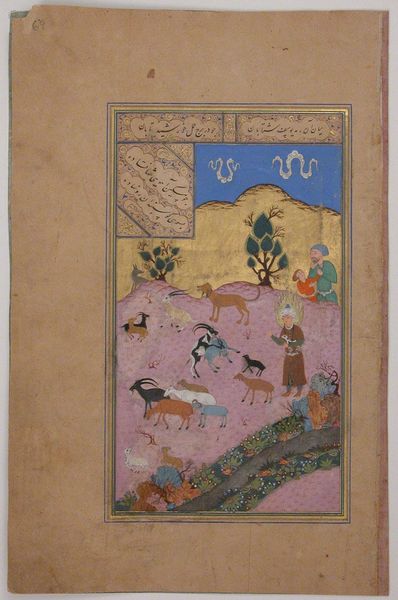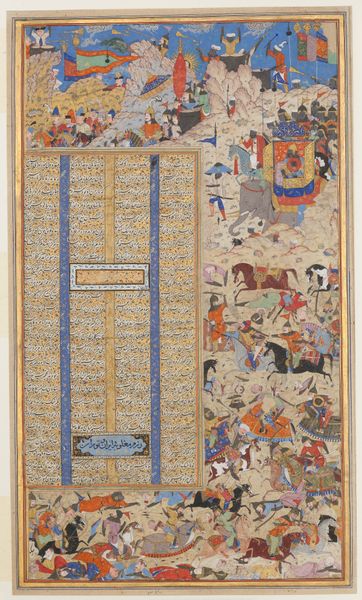
"Muhammad Ascends to Heaven in a Vision on Buraq", Folio from a Yusuf and Zulaikha of Jami 1550 - 1599
0:00
0:00
tempera, painting
#
tempera
#
painting
#
asian-art
#
landscape
#
figuration
#
islamic-art
#
miniature
Dimensions: H. 9 in. (22.9 cm) W. 5 1/4 in. (13.3 cm)
Copyright: Public Domain
Editor: Here we have "Muhammad Ascends to Heaven in a Vision on Buraq," a painting made with tempera, dating from the second half of the 16th century. It feels almost dreamlike with all those figures swirling against that intricate blue and gold backdrop. What do you make of this scene? Curator: It’s truly mesmerizing, isn’t it? This is a folio, so originally part of an illuminated manuscript, from a work of the poet Jami, depicting the Prophet Muhammad's mystical Night Journey. I like to think the swirling gold patterns are actually trails of celestial light, and all those angelic faces and winged figures, well, they represent a chorus of divine welcome. Editor: The artist's vision of the heavens is interesting, almost geometric, compared to other religious artworks. Curator: You’ve hit on something important! This isn't trying to mimic reality, but rather to convey the intensity of a spiritual experience, using pattern and colour to induce a sort of awe in the viewer. Notice also that Muhammad’s face is veiled; a common artistic approach to show respect within Islamic art. Where does your eye go first in this picture? Editor: Probably to the Buraq, the mythical creature. It's so vibrant amidst all the figures. And then my eyes are drawn to the calligraphy. It almost seems part of the overall design, doesn't it? Curator: Absolutely, it's not separate, but completely integrated with the image. It would have been written before the image was made. You are absolutely correct - the swirling forms of the words give the painting so much motion! It seems like something eternal, being captured in time. Editor: Seeing how it blends into the piece itself makes me appreciate the work even more. Curator: And for me, recognizing that poetry and image combine so perfectly into an overall feeling reminds us of art’s power to communicate spiritual truths. It is also the function of art to simply give us, if even momentarily, the same emotions.
Comments
No comments
Be the first to comment and join the conversation on the ultimate creative platform.
